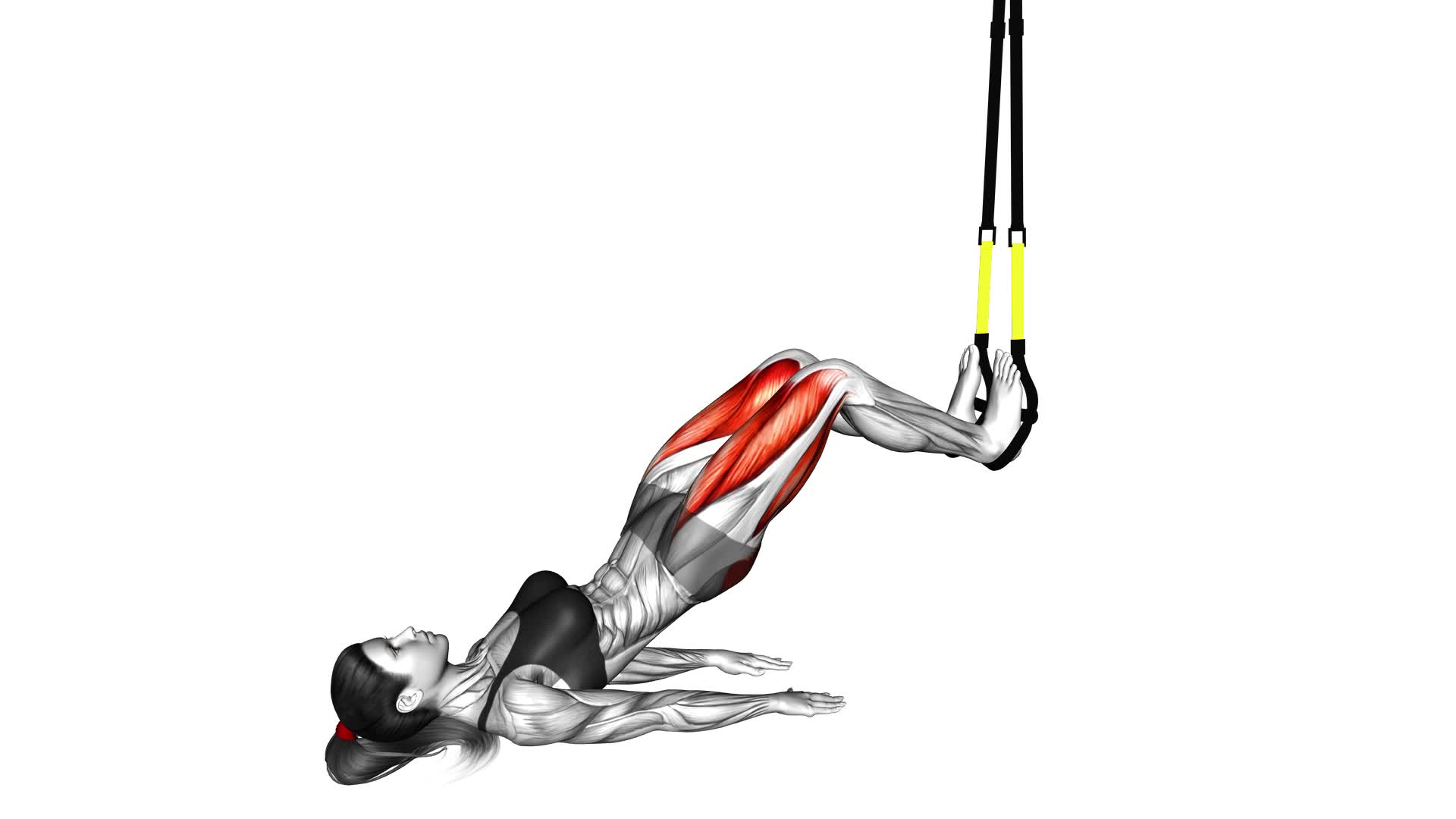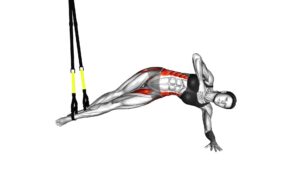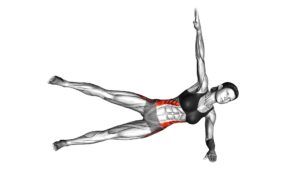Suspender Hip Bridge (female) – Video Exercise Guide & Tips

Looking to strengthen your glutes and core? Get ready to try the suspender hip bridge!
Watch This Exercise Video
This video exercise guide will walk you through the proper form and technique, as well as provide variations and modifications to suit your fitness level. Avoid common mistakes and maximize your results with helpful tips.
With a sample workout routine included, you'll be on your way to a stronger, more toned lower body.
Let's get started!
Key Takeaways
- Suspender Hip Bridge strengthens and tones glutes.
- Proper form and body alignment are crucial for stability and effectiveness.
- Breathing technique enhances stability and control during the exercise.
- Consistency, proper nutrition, and rest days are important for maximizing results and muscle recovery.
Benefits of the Suspender Hip Bridge
By incorporating the Suspender Hip Bridge into your workout routine, you can experience a range of benefits that will enhance your overall fitness and strength. This exercise is particularly effective in improving posture and strengthening your glutes.
The Suspender Hip Bridge is a targeted exercise that focuses on the gluteal muscles, specifically the gluteus maximus. By performing this exercise, you engage these muscles, helping to strengthen and tone them. Stronger glutes not only contribute to a more shapely backside but also play a crucial role in overall lower body strength and stability.
Additionally, the Suspender Hip Bridge can help improve your posture. As you lift your hips off the ground, you activate your core muscles, including the muscles in your lower back and abdomen. This activation helps to stabilize your spine and promotes better alignment, which in turn improves your posture.
Including the Suspender Hip Bridge in your workout routine can yield significant benefits. Not only will it help you strengthen and tone your glutes, but it will also contribute to improved posture. So, get ready to elevate your fitness game and enhance your overall strength and well-being with the Suspender Hip Bridge.
Proper Form and Technique
To perform the Suspender Hip Bridge with proper form and technique, it's important to focus on body alignment and stability. Make sure that your shoulders, hips, and knees are in a straight line, and engage your core muscles to maintain stability throughout the exercise.
Additionally, pay attention to your breathing, using a controlled exhale as you lift your hips and inhaling as you lower them, to help maintain stability and control.
Body Alignment and Stability
Ensure proper body alignment and stability during the Suspender Hip Bridge exercise by focusing on your core and engaging your glutes. Maintaining correct body alignment is crucial for maximizing the effectiveness of this exercise and preventing injury. Here are some important tips to help you achieve proper body alignment and stability:
- Start by lying on your back with your knees bent and your feet hip-width apart.
- Place the suspension straps around your ankles and lift your hips off the ground, forming a straight line from your knees to your shoulders.
- Keep your core muscles engaged throughout the exercise to stabilize your spine and pelvis.
- Avoid arching your lower back or letting your hips sag towards the ground.
- Focus on squeezing your glutes at the top of the movement to further engage your posterior chain.
Transitioning from proper body alignment and stability, let's now move on to the importance of core engagement.
Importance of Core Engagement
Engage your core to maintain proper form and technique during the Suspender Hip Bridge exercise.
Core engagement is crucial in this exercise as it helps stabilize your body and enhances the effectiveness of the movement. To activate your core, focus on contracting your abdominal muscles and drawing your belly button towards your spine. This will create a solid foundation and prevent any unnecessary strain on your lower back.
By engaging your core, you'll also improve your core strength, which is important for overall stability and balance. Strong core muscles not only support your spine but also transfer force efficiently, allowing you to perform the exercise with optimal control and efficiency.
Breathing Technique for Stability
Maintain stability and proper form during the Suspender Hip Bridge exercise by utilizing the correct breathing technique. Proper breathing techniques are essential for stability training, as they help engage the core muscles and maintain balance throughout the exercise.
Here are three important tips to improve your breathing technique and enhance stability during the Suspender Hip Bridge:
- Breathe in through your nose: Inhaling through your nose allows for a slower and deeper breath, providing better oxygenation to your muscles.
- Exhale fully: Focus on fully exhaling through your mouth, which helps activate the deep abdominal muscles and promote stability.
- Coordinate your breath with movement: Inhale as you lower your hips, and exhale as you lift your hips, synchronizing your breath with the movement to enhance stability and control.
Variations and Modifications
Try these variations and modifications to challenge and enhance your Suspender Hip Bridge exercise.
There are several variations and progressions you can incorporate into your routine to target different muscle groups and increase the difficulty level.
One variation is the single-leg hip bridge, where you lift one leg off the ground while performing the exercise. This variation increases the stability challenge and engages the glutes and hamstrings even more.
Another variation is the elevated hip bridge, where you place your feet on a raised surface such as a step or bench. This variation increases the range of motion and intensifies the activation of the glutes and hamstrings.
To further challenge yourself, you can try adding resistance by using a resistance band around your thighs or holding a weight plate on your hips. This will increase the resistance and make the exercise more challenging.
Additionally, you can try performing the exercise on an unstable surface, such as a stability ball, to engage your core muscles and improve balance.
Now that you know some variations and modifications to enhance your Suspender Hip Bridge exercise, let's move on to the next section about common mistakes to avoid, so you can ensure you're performing the exercise correctly and getting the most out of your workout.
Common Mistakes to Avoid
To ensure proper form and maximize the effectiveness of your Suspender Hip Bridge exercise, it's important to be aware of common mistakes to avoid. Here are some technique tips to help you perform this exercise correctly:
- Avoid arching your lower back: One common mistake is allowing your lower back to arch excessively during the movement. This can put unnecessary strain on your spine and reduce the effectiveness of the exercise. Instead, focus on keeping your core engaged and your back flat throughout the entire movement.
- Don't let your knees collapse inwards: Another mistake is allowing your knees to cave in towards each other during the bridge. This can place undue stress on your knees and compromise your stability. Make sure to keep your knees in line with your hips and ankles throughout the exercise.
- Don't rush the movement: Many people tend to rush through the Suspender Hip Bridge exercise, sacrificing proper form and control. Take your time and focus on performing each repetition with control and precision. This will engage your glutes and hamstrings more effectively and prevent any potential injuries.
Tips for Maximizing Results
To maximize your results with the Suspender Hip Bridge exercise, it's crucial to focus on maintaining proper form throughout each repetition. This means engaging your core, squeezing your glutes, and keeping your hips in line with your knees and shoulders.
Additionally, consistency is key when it comes to seeing progress. Aim to incorporate this exercise into your routine at least two to three times a week, and make sure to give yourself adequate recovery and rest days to allow your muscles to repair and grow.
Proper Form Importance
Maximize your results and prevent injury by prioritizing proper form during the Suspender Hip Bridge exercise. It's important to understand the significance of maintaining correct form to get the most out of your workout.
Here are some tips to help you achieve proper form:
- Warm up: Before starting any exercise, it's crucial to warm up your body. This increases blood flow, prepares your muscles, and reduces the risk of injury.
- Common misconceptions: One common misconception is that lifting your hips too high will give better results. However, this can strain your lower back and lead to discomfort. Another misconception is neglecting to engage your core. Remember to tighten your abdominal muscles throughout the exercise for optimal results.
- Breath control: Proper breathing technique is essential to maintain stability and control. Inhale deeply before starting the movement and exhale as you bridge your hips up.
By following these tips, you can ensure that you're performing the Suspender Hip Bridge exercise with correct form, maximizing your results and reducing the risk of injury.
Consistency breeds success, so stay tuned for the next section on how to maintain a consistent workout routine.
Consistency Breeds Success
Stay consistent with your workout routine to achieve optimal results and success.
Consistency is key in fitness, and it plays a crucial role in maximizing your results. Establishing a regular routine is important because it allows your body to adapt and progress over time. When you stick to a consistent schedule, you create a habit that becomes easier to maintain. This helps to prevent any setbacks or plateaus in your fitness journey.
Consistency also allows you to build upon your progress, as each workout builds upon the previous one. By staying consistent, you can ensure that you're constantly challenging yourself and pushing your limits.
Recovery and Rest Days
Consistency in your workout routine not only breeds success but also sets the foundation for maximizing results by incorporating recovery and rest days.
Recovery techniques and the importance of rest can't be overstated when it comes to achieving your fitness goals. Here are three key tips to help you make the most of your recovery and rest days:
- Active Recovery: Engage in low-intensity activities such as walking or yoga on your rest days. This promotes blood flow, reduces muscle soreness, and aids in the recovery process.
- Proper Nutrition: Fuel your body with the right nutrients to support muscle repair and growth. Include protein-rich foods, fruits, vegetables, and plenty of water in your diet.
- Quality Sleep: Aim for 7-8 hours of uninterrupted sleep each night. Sleep is crucial for muscle recovery, hormone regulation, and overall well-being.
Sample Workout Routine
To get the most out of your workout, it's important to incorporate the Suspender Hip Bridge exercise into your routine. This exercise is beneficial for strengthening your core and improving stability.
To begin your sample workout routine, start with a 5-minute warm-up, which can include light cardio exercises like jogging or jumping jacks.
After warming up, perform 3 sets of 10-12 Suspender Hip Bridge repetitions. Lie on your back with your feet in the suspenders and lift your hips off the ground, engaging your core muscles. Hold the bridge position for a few seconds before lowering your hips back down. Rest for 1 minute between sets.
After completing the Suspender Hip Bridge, move on to other exercises that target different muscle groups, such as squats, lunges, and push-ups. Remember to engage your core throughout each exercise to maximize its effectiveness.
Finish your workout with a 5-minute cool-down, which can include stretching exercises to improve flexibility and prevent muscle soreness.
Frequently Asked Questions
How Many Sets and Reps Should I Do When Performing the Suspender Hip Bridge?
When performing the suspender hip bridge, it's important to consider the number of sets and reps. To answer your question, the ideal number of sets and reps will depend on your fitness level and goals. Generally, starting with 2-3 sets of 10-12 reps is a good place to begin. As you progress, you can increase the number of sets or reps to challenge yourself.
Incorporating the suspender hip bridge into your routine has many benefits and can help you improve core strength and stability. To intensify the exercise, consider adding resistance bands or elevating your feet.
Can Men Also Perform the Suspender Hip Bridge Exercise?
Yes, men can also perform the suspender hip bridge exercise. It's a great way to strengthen your glutes, hamstrings, and core muscles.
To modify the exercise for men, you can increase the resistance by using heavier suspension straps or adding weights.
The benefits for men include improved athletic performance, increased lower body strength, and enhanced stability.
Is It Safe to Perform the Suspender Hip Bridge if I Have Lower Back Pain?
If you have lower back pain, it may not be safe to perform the suspender hip bridge exercise. It's important to listen to your body and prioritize your safety.
There are alternative exercises you can do that won't strain your lower back, such as gentle stretches or exercises that focus on strengthening your core. Modifying exercises, like using a stability ball or reducing the range of motion, can also help avoid lower back strain.
Remember to consult with a healthcare professional before starting any new exercise routine.
Can I Use a Resistance Band Instead of Suspenders for the Suspender Hip Bridge Exercise?
Yes, you can definitely use a resistance band instead of suspenders for the suspender hip bridge exercise. This alternative allows you to still work your glutes effectively while adding resistance to the movement.
However, it's important to note that using suspenders provides a more stable and secure grip, ensuring proper form and reducing the risk of injury.
How Long Should I Hold the Top Position of the Suspender Hip Bridge?
To properly perform the Suspender Hip Bridge, it's important to know how long to hold the top position. Aim to hold it for about 2-3 seconds before lowering back down. This will engage your glutes and strengthen your core.
Now, let's talk about how to progress the exercise and avoid common mistakes. Gradually increase the number of repetitions or add resistance bands to challenge yourself. Remember to maintain proper form throughout the movement.
Conclusion
In conclusion, the suspender hip bridge is a highly effective exercise for women that targets the glutes and strengthens the core.
By maintaining proper form and technique, individuals can maximize the benefits of this exercise.
Additionally, variations and modifications can be made to cater to different fitness levels.
Avoiding common mistakes and following the provided tips will help ensure optimal results.
By incorporating the suspender hip bridge into a well-rounded workout routine, women can achieve their fitness goals and enjoy a stronger, more toned physique.

Author
Years ago, the spark of my life’s passion ignited in my mind the moment I stepped into the local gym for the first time. The inaugural bead of perspiration, the initial endeavor, the very first surge of endorphins, and a sense of pride that washed over me post-workout marked the beginning of my deep-seated interest in strength sports, fitness, and sports nutrition. This very curiosity blossomed rapidly into a profound fascination, propelling me to earn a Master’s degree in Physical Education from the Academy of Physical Education in Krakow, followed by a Sports Manager diploma from the Jagiellonian University. My journey of growth led me to gain more specialized qualifications, such as being a certified personal trainer with a focus on sports dietetics, a lifeguard, and an instructor for wellness and corrective gymnastics. Theoretical knowledge paired seamlessly with practical experience, reinforcing my belief that the transformation of individuals under my guidance was also a reflection of my personal growth. This belief holds true even today. Each day, I strive to push the boundaries and explore new realms. These realms gently elevate me to greater heights. The unique combination of passion for my field and the continuous quest for growth fuels my drive to break new ground.



